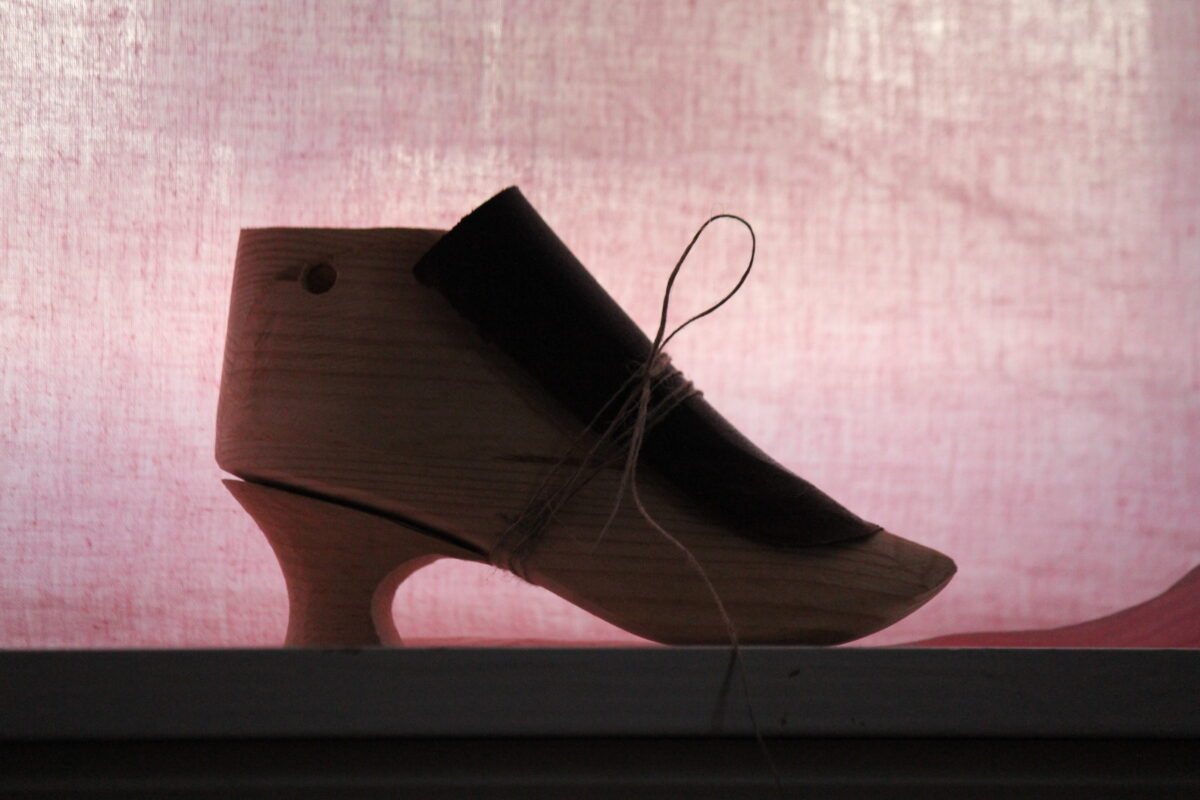En veiledning forklart slik jeg tar fatt på teknikken i 2025
Det er noen helt avgjørende ulikheter som skiller den moderne passformen fra den «gamle». Vi vet at de fleste sko fra sen middelalder frem til 1800-tallet er symmetriske eller likesidet. Og våre sko i dag er høyre/venstre sko som ikke kan sammenliknes. Derfor vil svært mange nødvendige og karakteristiske trekk bli borte i moderne sko som lages for å «se ut som» vendsøm.
Det er unødvendig å overvelde et publikum med tekst, følg heller med på noen innlegg. Det vil bli forståelig underveis.
English summary: There are many details that make the turnshoe so different from a modern shoe. The lasts are allso not the same. Follow a short summary of the step-by-step. The How-to-do-this instruction manual is in the making.
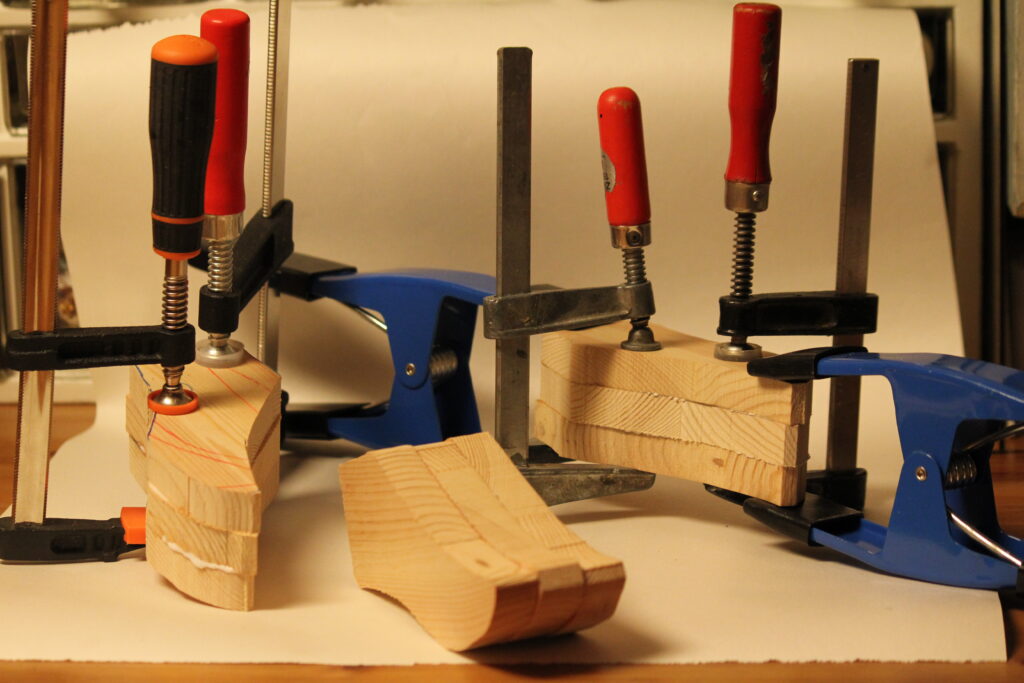
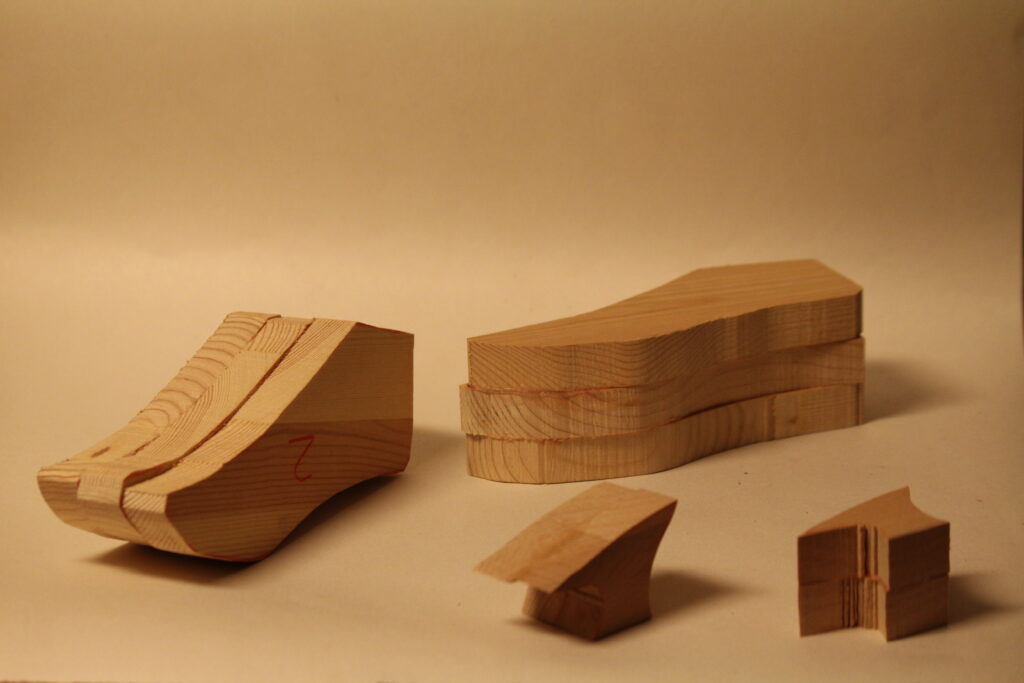
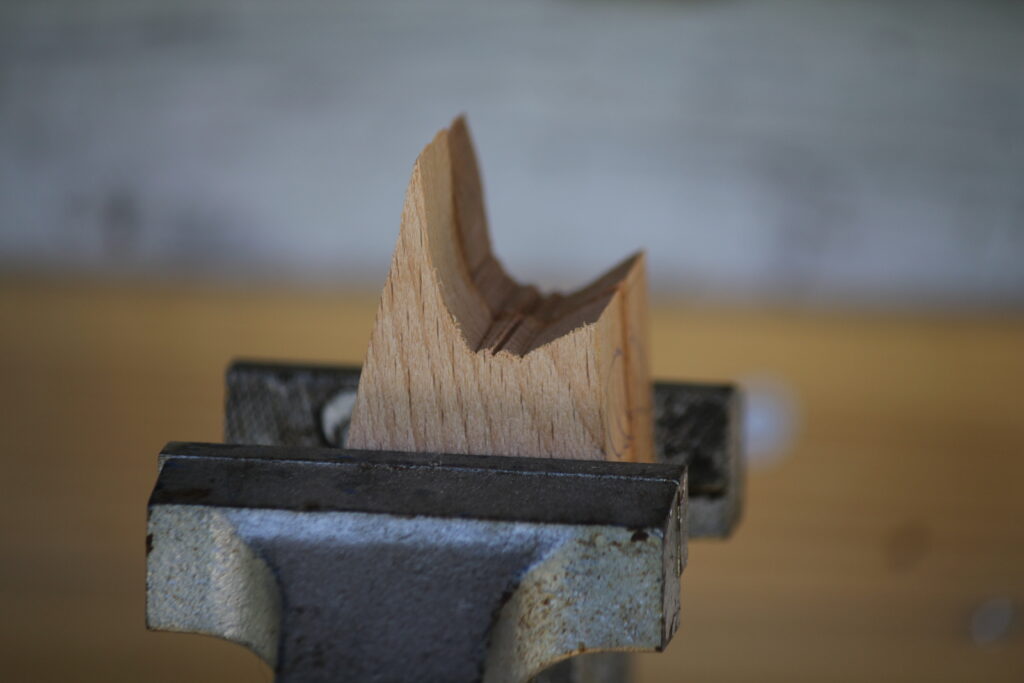
English: Fasten the heel in the clamp -finish the heel front, you will never have a better grip.
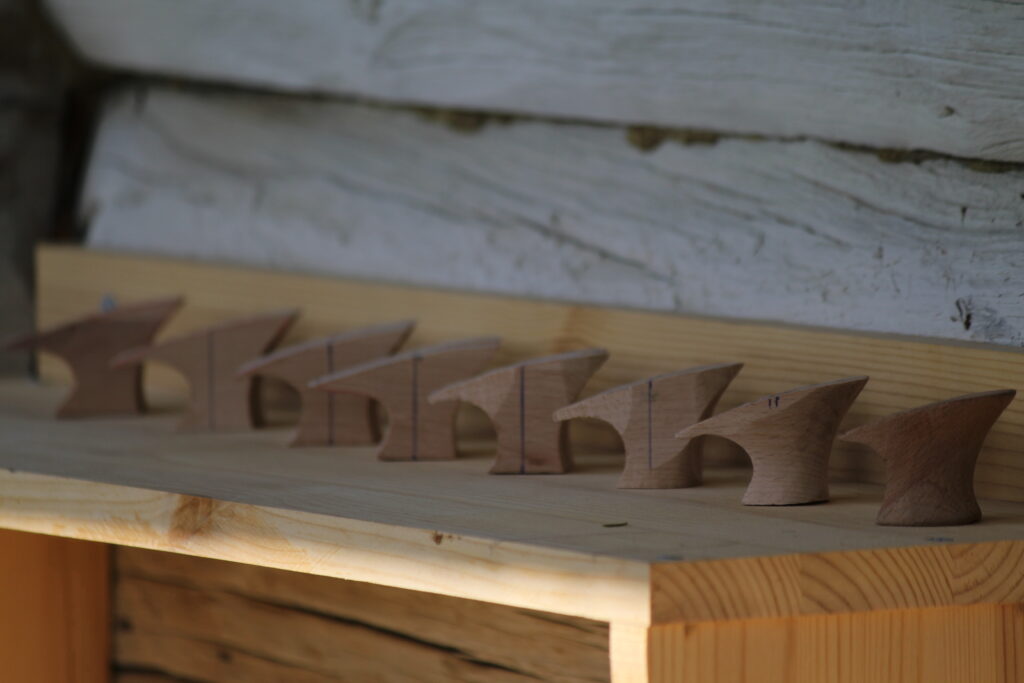
Det er lett å gjøre feil, og fint å prøve i serie.
English: Small steps, one or two ready to try the last on, but wait! There will be misstakes, good to not make all of them ready at the same time.

English: As I glue the wood together I can have the midline in the middle, I saw it with the bandsaw.
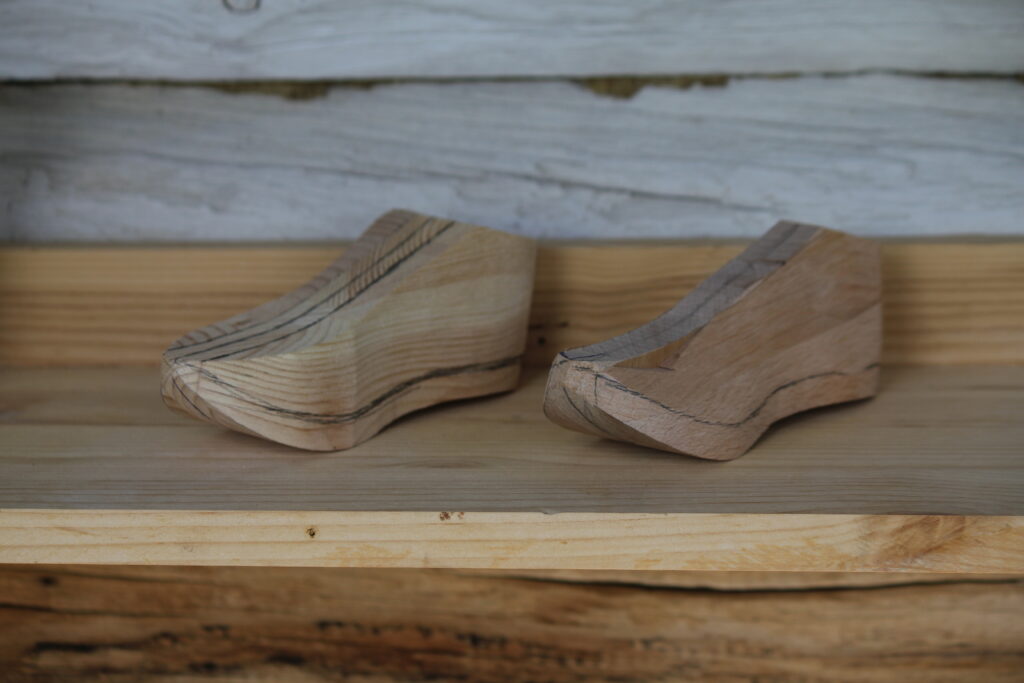
English: I draw a line 1 cm from the sole and the midlines on top and the heel. The wood is sanded down.
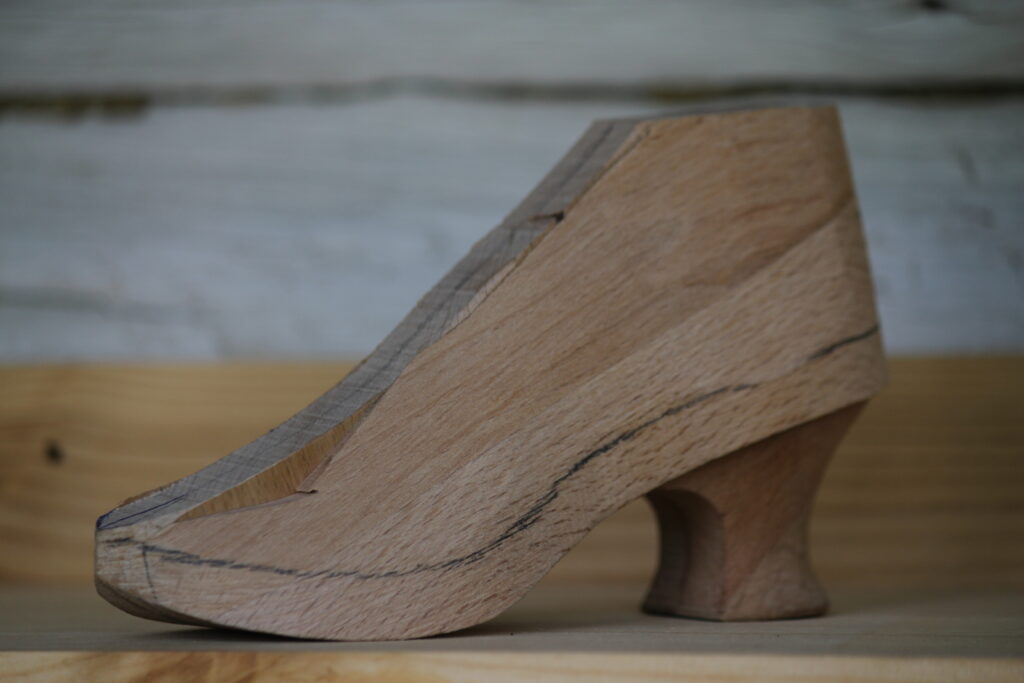
English: The last and the heel together, they compliment each other and the heel must be a jewel just as the buckle is.
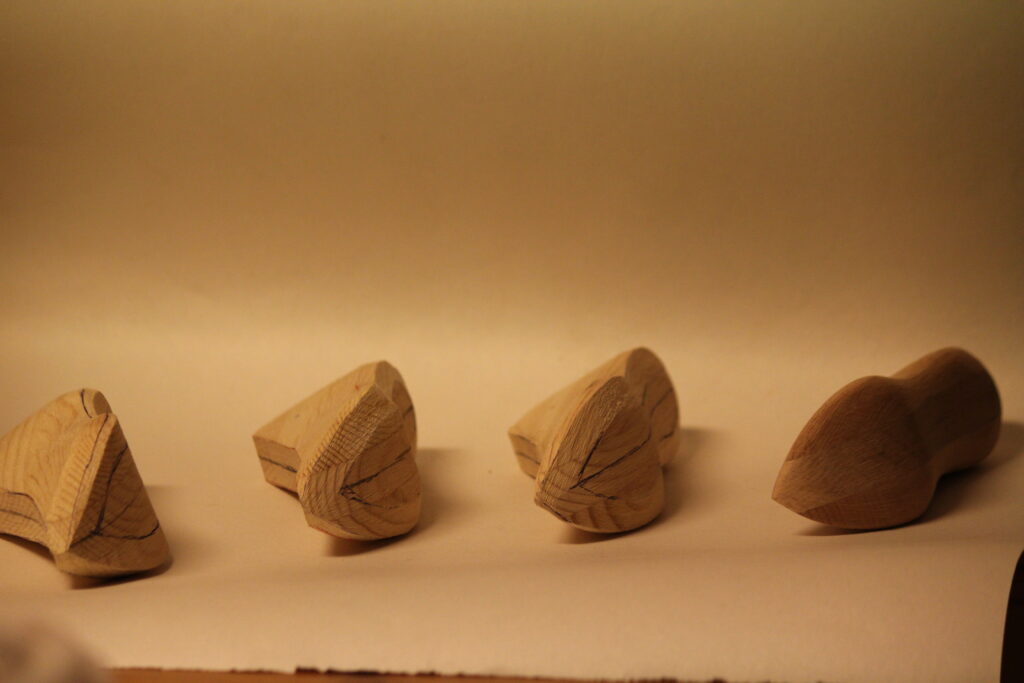
English: Step-by-step from left to right, I should not have made a round sole edge, It must be sharp.
Dette var en slags oversikt over arbeidet med lest og hæler. Jeg jobber med en god innføring som dekker hele arbeidet. Fra målet og fotomriss slik jeg vil gjøre det og vil at andre skal lære av. Til skoene er ferdige og lestene skal av.
Det er også viktig å lage skoene med verktøy som er ment for arbeidet.
Ulike treslag i hælene.
De gamle skospennene.
Lær garvet uten krom til sålelær, vil det være lurt å skaffe håndgarvet lær til nåtlingen(søm i overlæret)?
Den gamle drakten til de gamle skoene.
Ting som ikke er nødvendig for å lykkes:
Skomakerkule med sprit som arbeidslampe.
Lestmakerbenk med kniv.
Dreng og pike til bære vann og ved.
English Summary:
This is a rough guide to how I did the lasts and heels. In time I will give more instructive posts on how and why I do and did. May allso have a better understanding of why-not-to-do.
It matters what tools they made the shoes with back then.
I will use leather tanned with oakbark in the sole, may be a good choice to have hand tanned leathers for uppers as well.
The old style dress to make a deeper dive into the true nature of a style in dress
Stuff I do not need:
Shoemakers glass bowl with spirits/ moonshine as worklamp.
Lastmakers bench with knife.
Boy and girl to fetch wather and firewood.
